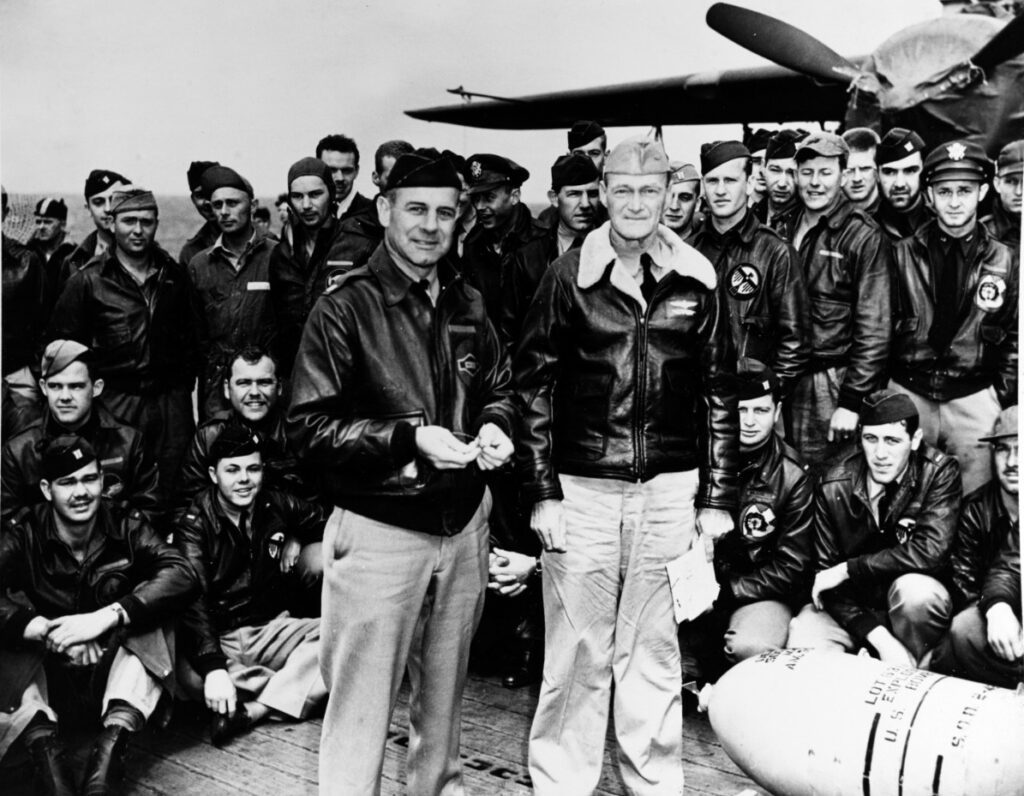The Doolittle Raid was a daring and audacious attack carried out by American B-25 bombers on Japan just months after the devastating surprise attack on Pearl Harbor. Led by Lieutenant Colonel James Doolittle, the raid was a symbolic strike on Tokyo that demonstrated America’s resolve to seek retribution against Japan. The meticulous planning and preparation, including launching land-based bombers from an aircraft carrier for the first time, showcased the bravery and ingenuity of the American airmen involved. Though the raid caused limited physical damage, it had a significant impact on morale and forced Japan to divert resources, weakening their war effort. This operation remains a pivotal moment in American military history, signaling the United States’ determination to fight back against aggression.
The Doolittle Raid: America’s Audacious Attack on Japan in Retaliation for Pearl Harbor
On December 7, 1941, the United States suffered a devastating surprise attack on its naval base at Pearl Harbor, Hawaii by the Imperial Japanese Navy. This act of aggression thrust the U.S. into World War II and triggered a wave of patriotic fervor and determination to seek retribution against Japan. Just a few months later, on April 18, 1942, the daring Doolittle Raid was launched as a symbolic strike on Tokyo, Japan by a squadron of American B-25 bombers under the command of Lieutenant Colonel James Doolittle.
The Planning and Preparation
The idea for the raid originated from the mind of Lieutenant Colonel James “Jimmy” Doolittle, a renowned aviation pioneer and military leader. Doolittle proposed using B-25 Mitchell medium bombers to carry out a surprise attack on Japan’s capital city of Tokyo, in order to boost American morale and damage Japan’s war effort. Despite the skepticism of many military leaders, Doolittle’s plan was eventually given the green light by President Franklin D. Roosevelt.
The bombers were modified to carry extra fuel in order to extend their range, and the crews underwent intense training to prepare for the mission. The plan was for the bombers to take off from the aircraft carrier USS Hornet, which had been specially equipped to launch the B-25s. This was a risky maneuver, as no land-based bombers had ever taken off from a carrier before.
The Raid
On the morning of April 18, 1942, the sixteen B-25 bombers took off from the deck of the USS Hornet and headed towards their target in Japan. The raid was a complete surprise to the Japanese, who believed that their homeland was out of reach of American bombers. The bombers conducted a precision bombing raid on military and industrial targets in Tokyo and other cities, causing significant damage and demonstrating America’s ability to strike back against Japan.
After the raid, the bombers continued flying towards China, where they crash-landed or bailed out due to low fuel. While some of the crews were captured by the Japanese and executed, most were rescued by Chinese guerillas or American forces. The raid sent a strong message to Japan that the United States would not be intimidated and was capable of striking back with force.
The Aftermath
The Doolittle Raid was a small-scale operation in terms of the damage inflicted on Japan, but it had a huge impact in terms of morale and symbolism. The raid lifted American spirits and proved that the Japanese were not invincible. It also forced the Japanese government to divert resources to defend the home islands, which ultimately weakened their war effort in other theaters.
Despite the risks and challenges, the Doolittle Raid remains one of the most audacious and daring operations in American military history. It showcased the bravery and ingenuity of the American airmen who took part and highlighted the determination of the United States to seek justice for the attack on Pearl Harbor. The raid was a turning point in the Pacific War and set the stage for further American victories against Japan.
